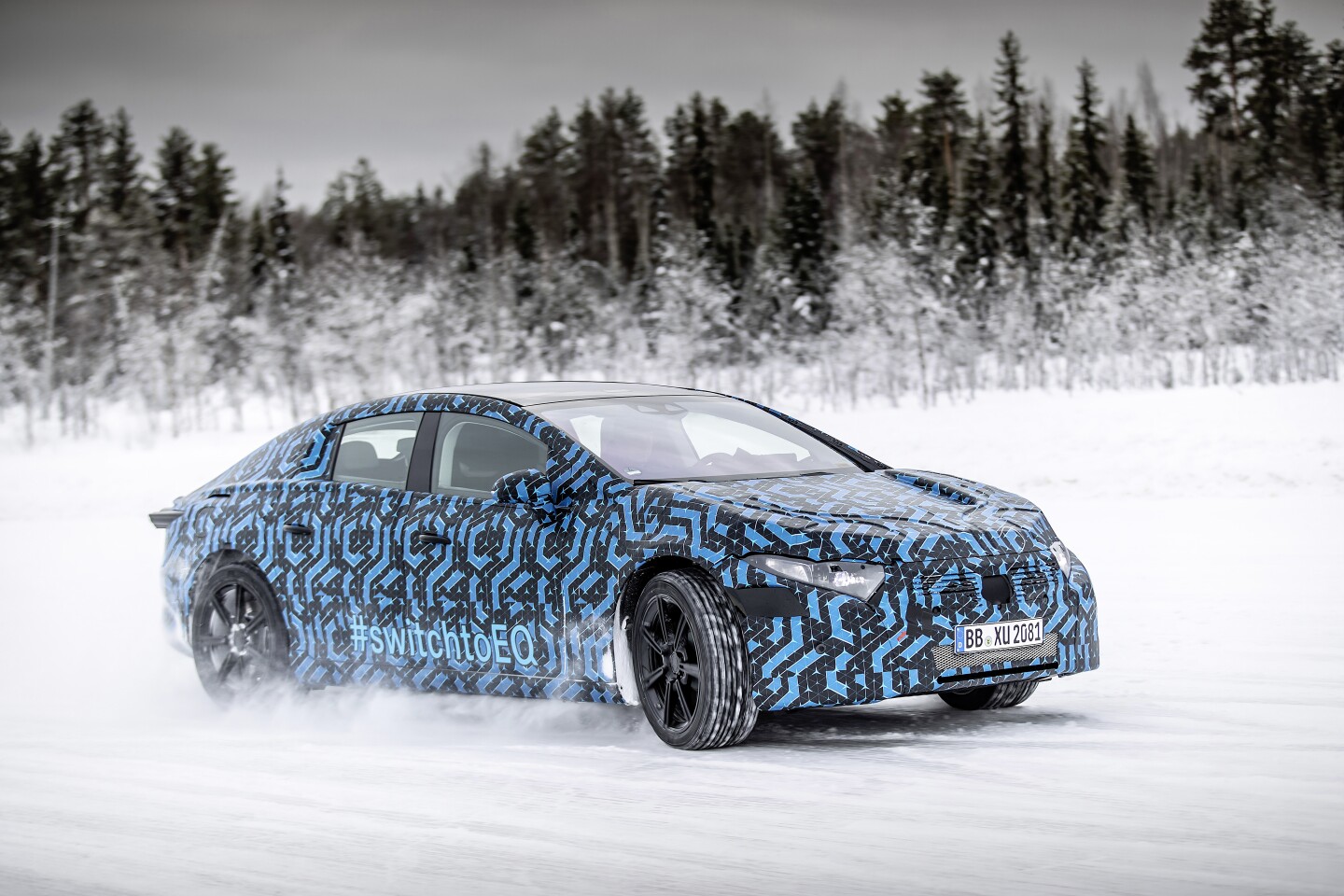In a move sure to delight tech geeks every bit as much as it infuriates stick-shifting traditionalists, Mercedes-Benz uses this year's virtual CES to highlight its largest human-machine interface (HMI) ever, the MBUX Hyperscreen. Slated to launch in the upcoming EQS flagship electric sedan, the Hyperscreen stretches the full width of the dashboard to stuff three screens into one continuous frame. It's pretty to look at, but is it the most effective way of controlling basic vehicle functions?
Unlike the oversized rectangular touchscreens we've seen in concept vehicles and prototypes from the likes of Honda and Byton, the Hyperscreen has some shape and flow to it, drifting downward from a high point around the digital instruments to a large center screen before rising gently back up into a passenger screen. The full body curves lightly for better visibility around the cabin, stretching 55 inches (141 cm) in total width. It flows around the left and right air vents to blend together the digital and analog worlds.
The centerpiece of the Hyperscreen design is the central infotainment screen, which uses OLED technology for deep blacks, radiant colors and razor-sharp contrast from the full spectrum of angles and light conditions. As in current-generation displays, this is where drivers will access key information and controls regarding mapping, navigation, radio and multimedia, climate and more.

The passenger display is also powered by OLED tech and serves as an auxiliary infotainment screen for front passengers. When the passenger seat goes unoccupied, the screen switches over to a simple graphical display so as to cut down on digital driver distraction, insomuch as that's possible with a 55-in multi-display.
Behind the Gorilla Glass, the MBUX Hyperscreen packs eight CPU cores, 24 GB of RAM and 46.4 GB/s of RAM memory bandwidth. Twelve actuators provide haptic feedback, and a sensor set handles gesture control.
Anyone who's ever spent time pawing unproductively at a glassy infotainment screen, trying to scroll through menus might be a bit anxious about trying to control such a large hunk of touchscreen. Mercedes tries to quell anxiety and make the experience more intuitive using an AI-driven "zero level" interface meant to keep the most-used menus always accessible from the top screen. The system evolves over time to reflect the driver's preferences. You might even say it's like having a magical set of controls — say buttons and/or dials — that the driver can access quickly and intuitively without taking eyes off the road.

After learning driver habits and preferences, the MBUX system can tailor available menu settings for up to seven driver profiles. For instance, if the owner has a history of making work calls on a specific day and time, the MBUX system will subsequently ask if he or she would like to make that call when that day and time approaches. It can also record GPS positions of locations in which the driver uses the EQS' ground clearance-boosting suspension lift to prompt the driver to do the same the next time those GPS numbers are approached.
The new MBUX iteration will also incorporate next-generation voice commands, including a new Mercedes Travel Knowledge feature that can provide in-depth facts, history and context about local points of interest. Occupants can simply ask a natural question like, "Hey Mercedes, what can you tell me about the restaurant on the left," and the system will provide information in both display and audio form. With a quick confirmation, the system can reroute navigation to the business or attraction in question.

Mercedes announced previously that the EQS, the S-Class of EQ electrics that will serve as launch vessel for the MBUX Hyperscreen, will arrive this year, bringing with it a new electrical architecture that will underpin future sedans and SUVs.
Source: Daimler












